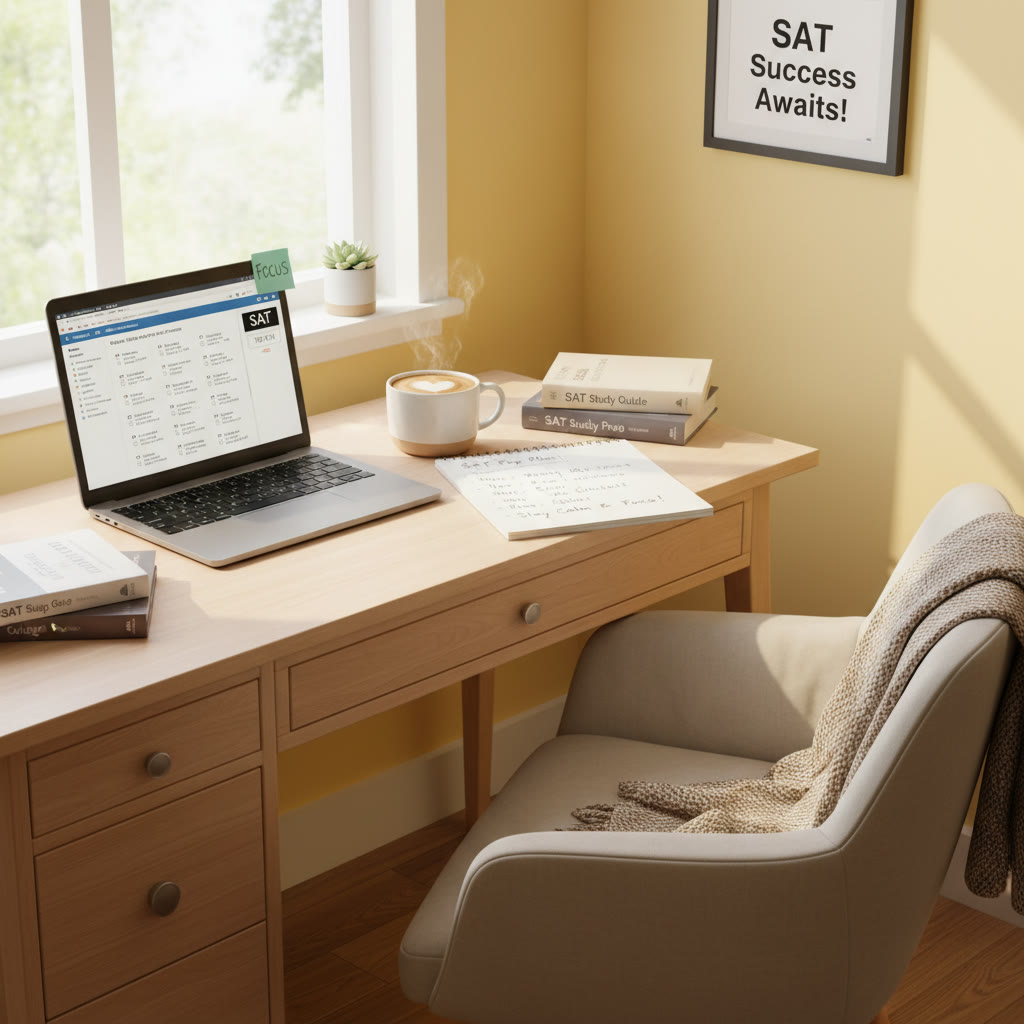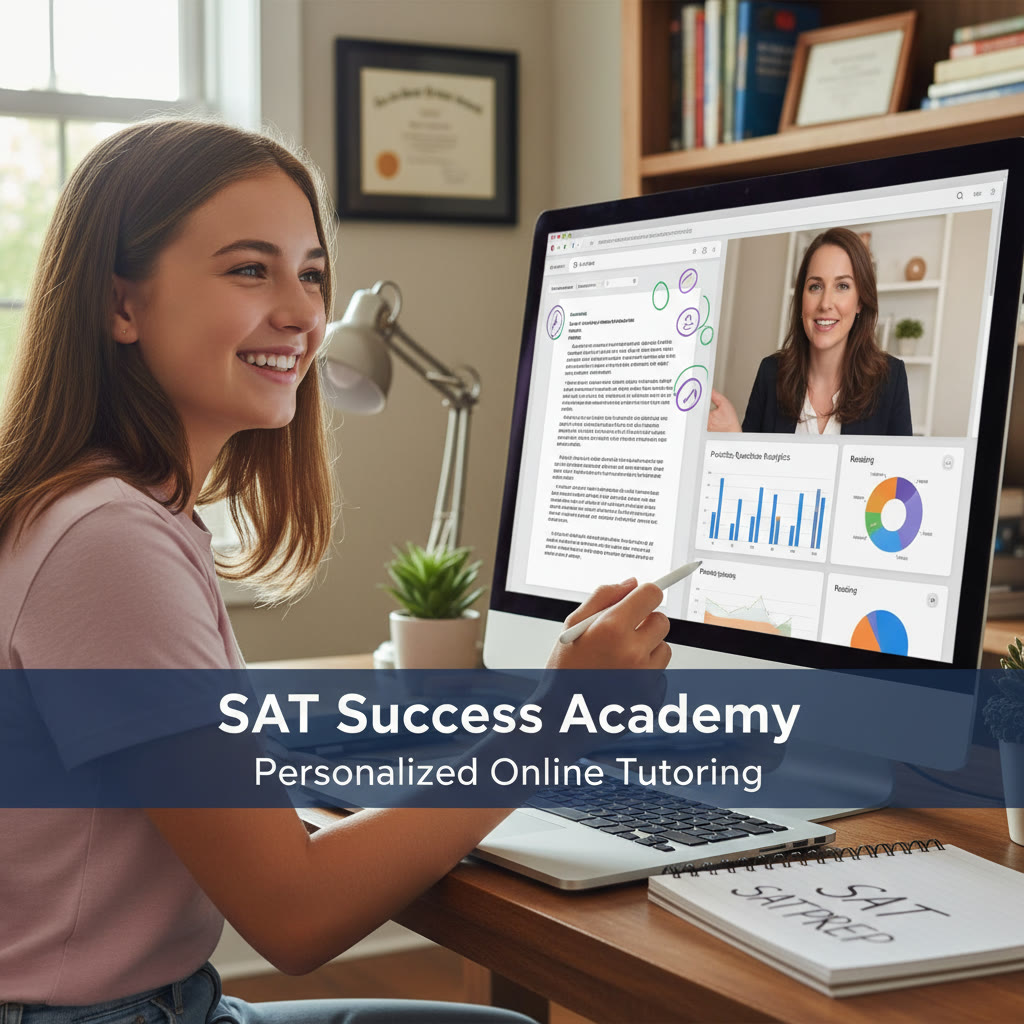Introduction: Why a 1400–1500 SAT Is a Powerful Place to Be
If you’ve earned a 1400–1500 on the Digital SAT, first — congratulations. That score range places you well above the national average and in a competitive position for many selective colleges. But the number alone doesn’t tell the whole story. Admissions officers look at context: extracurriculars, essays, recommendations, course rigor, demonstrated interest, and your unique voice. This guide is written for students and parents who want a clear, human roadmap: where a 1400–1500 can get you, realistic target and reach schools, how to shape your applications, and concrete next steps — including how personalized tutoring (such as Sparkl’s 1-on-1 guidance and tailored study plans) can fit naturally into your path.

Understanding the Score: Context Matters
First, a quick reality check. A 1400–1500 is excellent. Numerically, it signals strong evidence of college readiness in both Evidence-Based Reading & Writing and Math. But schools differ in how they use scores. Some emphasize scores more than others; many are test-optional or test-flexible; others will place a 1400–1500 squarely in their competitive middle or even near the median. That means your strategy should be twofold: (1) choose colleges where this score is a clear fit, and (2) strengthen the rest of your application so your strengths complement your test performance.
How Colleges Interpret This Range
- Safety/Probable: Many public universities, regional private colleges, and less selective privates will consider a 1400–1500 well above their middle 50% range.
- Target: For selective (but not ultra-selective) institutions, this score typically puts you within or near the middle 50% — making you a strong contender when other parts of the application match.
- Reach: For the most selective schools (top Ivies and similar), a 1400–1500 is often below their typical median, so you’ll be in a reach category — still possible, especially with stellar extracurriculars and essays.
Building a Balanced College List: Safety, Target, Reach
A smart list should include schools where your SAT places you in three categories. Here’s how to think about each, with examples and what they typically value beyond test scores.
Safety Schools (Comfort & Certainty)
These are colleges where a 1400–1500 should make you competitive for admission and merit aid. They’re useful to stabilize your decision-making and financial planning.
- What to prioritize: campus fit, major-specific strength, affordability, and likely scholarship opportunities.
- Application tip: Apply early where possible to maximize scholarship chances.
Target Schools (Where You Shine)
These are the colleges where your score aligns with the middle range of admitted students. With strong essays and meaningful activities, you’ll be competitive.
- What to prioritize: authentic essays, teacher recommendations that show growth, and demonstrated interest (campus visits, meaningful emails to admissions).
Reach Schools (Aim High, Play Smart)
At reach schools — including some top national universities — a 1400–1500 often falls short of the median. Yet many applicants in this range are admitted every year. The difference is exceptional context: unusual talents, research, leadership, or compelling personal stories.
- What to prioritize: distinctive extracurricular achievements, supplemental materials if allowed (portfolios, research abstracts), and application timing (some programs evaluate spring admits differently).
Sample Colleges and How a 1400–1500 Fits
The table below shows a representative set of colleges grouped by admission category and what a student in the 1400–1500 range should emphasize when applying. This is illustrative — not exhaustive — and assumes a well-rounded high school record.
| Category | Representative Colleges | Why They Fit | Application Focus |
|---|---|---|---|
| Safety | Strong state publics, regional privates | Score often above middle 50%; higher chance for merit aid | Apply early, highlight GPA and leadership |
| Target | Selective publics & top-tier privates where 1400–1500 ≈ middle | Score is competitive; fit often decided by essays & rigor | Show academic challenge, thoughtful essays, strong recs |
| Reach | Top national universities & most elite privates | Median often higher; admissions holistic and highly selective | Emphasize unique story, major-specific achievements, teacher advocacy |
Real-World Example: Two Applicants, Same Score
Imagine two students, both with a 1450. One has a 4.0 weighted GPA, captain of a state championship team, and research published in a local science journal. The other has a 3.6 GPA, part-time job, and volunteer hours supporting family needs. Both have compelling narratives — but they’ll present differently to admissions committees. The first might emphasize intellectual curiosity and academic leadership; the second can highlight resilience, work ethic, and community impact. A 1450 helps both, but context shapes where each is most likely to succeed.
How to Use a 1400–1500 Strategically in Applications
1. Be Strategic With Test Reporting
Many colleges are test-optional; others accept superscoring or will superscore within sections. Think about where your score strengthens your application and where you might omit it if other elements are stronger. For schools where this score sits above or near the middle 50%, reporting it can improve scholarship chances and admissions standing.
2. Pair the Score With Rigorous Coursework
Admissions officers evaluate the whole transcript. A 1400–1500 paired with Advanced Placement, IB, or honors classes shows readiness for challenging college work. If your transcript lacks rigor, address that in your application through context — AP/dual-enrollment plans, summer coursework, or a strong senior-year schedule.
3. Craft Essays That Add Dimension
An SAT score gets you noticed; essays make you memorable. Use essays to show growth, values, and the perspective that numbers can’t capture. Specificity matters — an anecdote, a turning-point moment, or a concrete example of leadership will resonate more than broad statements.
4. Choose Recommenders Who Know You Deeply
A teacher who can speak about your intellectual curiosity or a supervisor who can describe your reliability gives admissions officers a narrative they can trust. Recs that echo themes from your essay strengthen the overall story.
Scholarships, Merit Awards, and Financial Fit
A 1400–1500 can open doors to merit scholarships at many selective and regional schools. Colleges often use quantitative metrics like GPA and SAT ranges to award automatic or competitive scholarships. So don’t overlook mid-tier selective schools — some offer generous aid to attract strong students.
Tips to Maximize Financial Opportunities
- Apply early for merit scholarships; deadlines matter.
- Complete institutional scholarship applications even if the main admission application is standardized.
- Use your score to qualify for departmental or program-specific awards (especially in STEM and business fields).
Practical Timeline: From Score to College Decision
Here’s a straightforward timeline that students with a 1400–1500 can follow during junior and senior years to turn a strong test score into admission and financial opportunity.
| When | Action | Why It Matters |
|---|---|---|
| Junior Year (Spring–Summer) | Finalize target list, take SAT/retake if aiming higher, begin drafting essays | Allows time to improve score and shape applications |
| Senior Year (Fall) | Submit Early Action/Decision and scholarship apps; request recs | Early apps can increase admission & scholarship chances |
| Senior Year (Winter–Spring) | Compare offers, financial aid packages, and visit or attend admitted events | Informs final choice with money and fit |
Study Plans and Last-Mile Boosts: How Personalized Help Pays Off
For students in the 1400–1500 range, small improvements can make a big difference — sometimes turning a target school into a likely admit or unlocking a higher-tier scholarship. That’s where tailored support matters: focused practice on a weak section, strategy for the digital test format, or polishing essay drafts with a coach who understands admissions priorities.
What Personalized Tutoring Should Deliver
- 1-on-1 guidance tuned to your strengths and timing (not generic drills).
- Tailored study plans that prioritize high-impact improvements.
- Expert tutors who have recent admissions insight and practice with the Digital SAT format.
- AI-driven insights for efficient practice — identify question types that cost you the most time and target them.
Services like Sparkl can fit naturally into this stage by offering individualized tutoring, data-driven practice, and feedback loops that help students improve both scores and realistic application strategies. When a tutor tailors lessons around a student’s specific mistakes and college list, every minute of prep becomes more meaningful.
Application-Winning Extras: Essays, Interviews, and Portfolios
For many colleges, the difference between admit and deny is how convincingly you present your story. A 1450 plus a flat, generic essay will underperform compared with a 1420 paired with a vivid, memorable application.
Essay Advice That Works
- Lead with a specific moment — not an abstract statement.
- Show growth. Admissions committees want to see how you think and change.
- Keep the voice authentic — write as you speak (but polished).
- Get feedback, but don’t let others rewrite your voice.
Interviews & Supplementals
Interviews are less common at large publics but more frequent at small colleges and honors programs. Treat them as conversations about your academic interests and what you’ll add to campus life. Supplementals — major-specific prompts, short essays, or creative submissions — are opportunities to demonstrate fit and passion.
Common FAQs from Students and Parents
Is a 1400–1500 “good enough” for top colleges?
It depends on the school. For many selective universities it’s competitive; for the most elite institutions, it may be below median. Admissions are holistic — with a great application and unique achievements, students in this range still gain admission every year.
Should I retake the SAT if I’m at 1480?
Ask two questions: (1) Will more prep likely bump you into a materially higher range (e.g., 1520+)? (2) Do you have time to improve without sacrificing senior-year priorities? If the answer to both is yes, a targeted retake can make sense. But also focus on essays, recommendations, and coursework — they’re equally influential.
How can parents best support without taking over?
Be a resource and sounding board. Help with logistics (deadlines, visits), encourage consistent study rhythms, and praise effort. Let the student own essays and applications; parental enthusiasm should translate into calm support, not pressure.
Putting It All Together: A Practical, Week-by-Week Plan (8 Weeks)
This plan is meant for a student in the 1400–1500 range who wants incremental improvement and stronger application polish in two months.
- Weeks 1–2: Diagnostic practice test, identify weakest question types, set specific goals (e.g., trim 4 minutes in reading passages, reduce algebra mistakes).
- Weeks 3–4: Focused practice (one section per day), targeted review of mistakes, begin drafting college essays.
- Weeks 5–6: Full-length timed practice under Digital SAT conditions, review timing strategies, refine essays, request first round of recommendations.
- Weeks 7–8: Final practice test, light review, submit Early apps or finalize regular apps, and prepare for interviews or portfolio submissions.
If you prefer guided support, a personalized tutor or program that offers 1-on-1 sessions, a tailored study plan, and feedback on essay drafts can condense months of unfocused practice into productive sessions — exactly the kind of efficiency many families appreciate.

Final Thoughts: Your Score Is a Start, Not the Story
A 1400–1500 SAT is a strong platform. It gives you access to a wide range of colleges and can unlock meaningful scholarships. But the most successful applicants are those who treat the score as one piece of a larger narrative: thoughtful course choices, meaningful extracurriculars, polished essays, and smart application strategy. Use your score strategically — choose schools where it positions you well, craft an authentic application story, and consider targeted, personalized help (like 1-on-1 tutoring and AI-driven practice) if you want efficient, high-impact improvements.
Quick Checklist: Next Steps This Month
- Decide whether to report your score to each college (based on their median ranges and scholarship criteria).
- Polish or finish at least one application essay; get feedback from a trusted teacher or tutor.
- Confirm teacher recommenders and share a short summary of your achievements to help them write stronger letters.
- Create a prioritized list of schools (2–3 safeties, 3–5 targets, 2–3 reaches).
- Consider a short block of 1-on-1 tutoring focused on your weakest section and essay coaching — this often yields the best return on investment in the final weeks.
Encouragement for Families
This process can feel enormous, but remember: your student is more than a number. A 1400–1500 SAT opens doors, and thoughtful choices about where to apply, how to present your story, and where to invest time will make those doors easier to walk through. Breathe, prioritize, and take one step at a time. With a balanced list, strong essays, and targeted prep, students in this score range have every reason to be optimistic — and to aim for the college that fits them best.
Need a Hand?
If you’d like tailored support — a clear study plan, focused sessions on Digital SAT strategies, and essay coaching that lets your voice shine — look for programs that combine experienced tutors with personalized plans and data-driven practice. Those elements make the most difference for students sitting in this competitive 1400–1500 window.
Best of luck — and remember: the right college is the one where you can grow, belong, and do your best work. Your score is simply the first step toward that future.













No Comments
Leave a comment Cancel